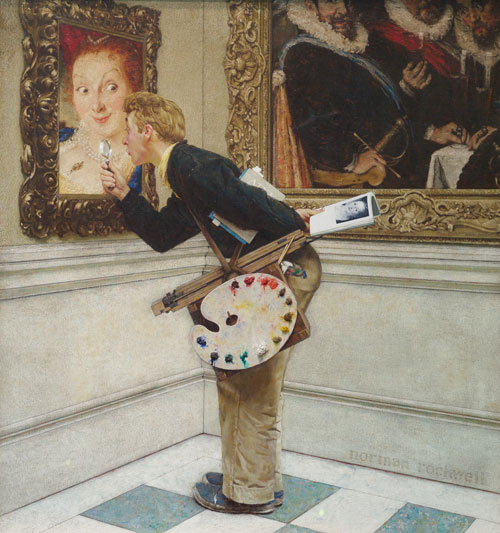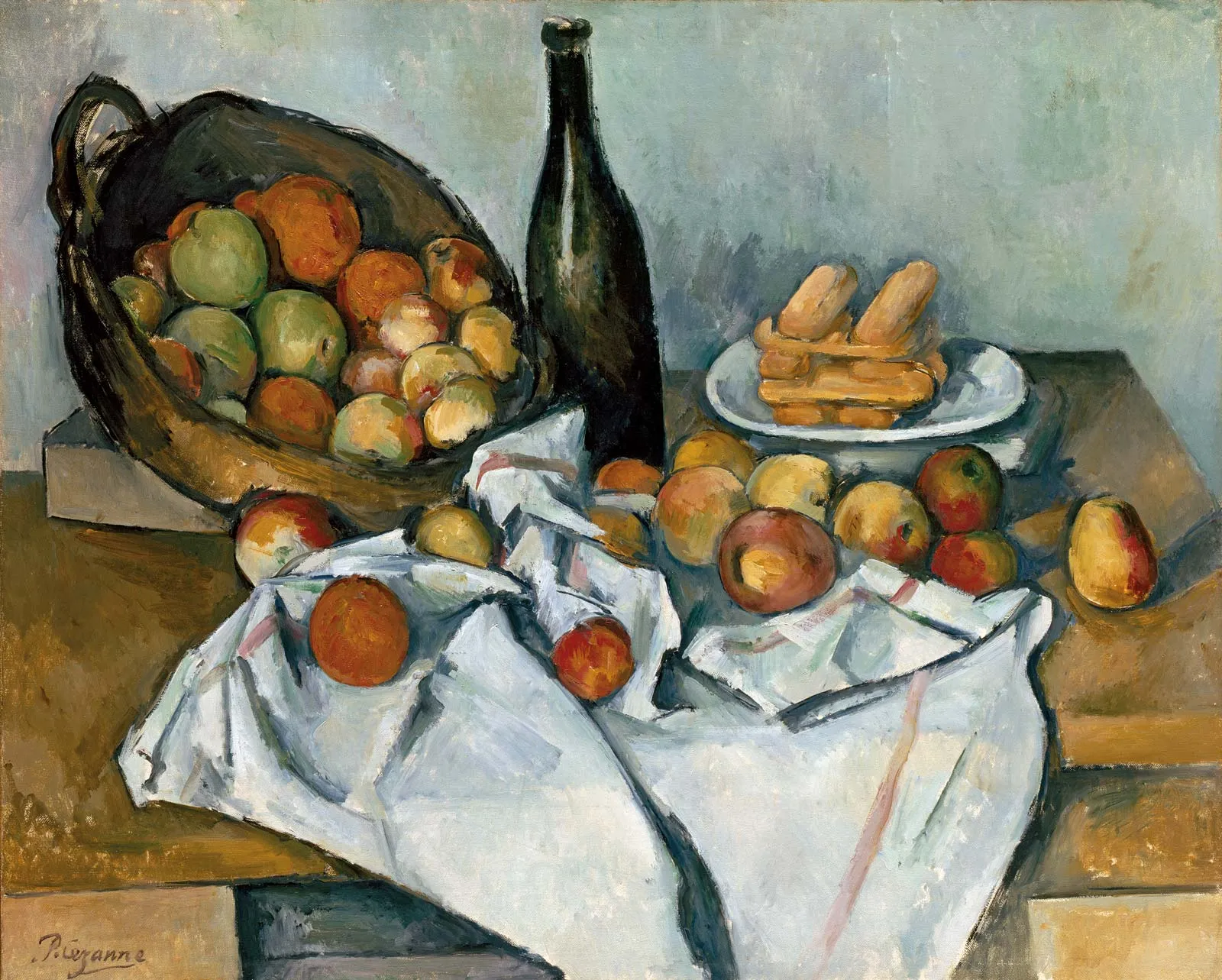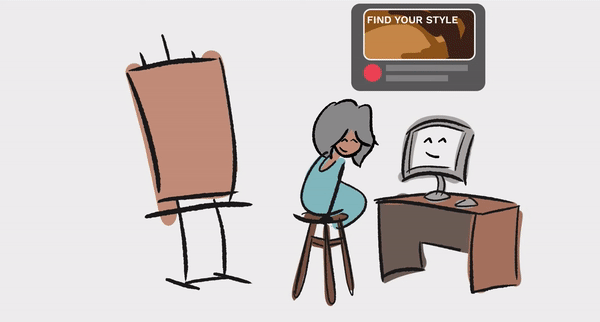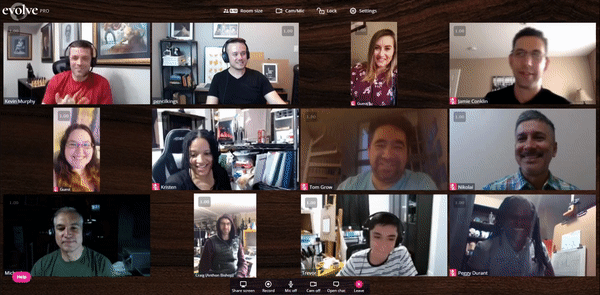
Constructive art criticism aims to improve art, not needlessly criticize it (Norman Rockwell, Art Critic 1955).
Struggling with feedback is a normal part of being an artist. But let’s be honest, it’s painful to receive feedback, and many art students find themselves avoiding it.
We understand why. You’re putting yourself out there and receiving unnecessarily harsh or unconstructive criticism feels horrible.
At Evolve Artist, providing feedback on our student’s work is a huge part of what makes our Program effective. Learning how to deal with art criticism is in itself a skill. So we’re sharing everything we know in our series on Constructive Art Criticism (Other posts in the series are HERE and HERE).
Not all feedback is created equal. If you’re in art school receiving vague pointers from an instructor or you're looking to Google and YouTube for guidance, we can confidently tell you that some feedback is better than others.
Today’s post goes through an important part of how to deal with art criticism. Here are 4 signs that the feedback you’re receiving is worth listening to, and what you can do when you receive unhelpful feedback.
Sign 1 - Learning how to deal with art criticism? Listen if it is objective and specific
Does this sound familiar?
“I’m not feeling the meaning behind this piece. Personally, this isn’t my style. I would have liked to see more exploration and creativity here. You need to be more creative in your approach”
This is a personal opinion and is often based on contemporary artistic tastes. While the person saying it may have a lot of authority and even experience, statements like these don’t offer any guidance on what you can do specifically to improve your skills. This does not help you learn how to deal with art criticism because the critique itself is vague.
Of course, it’s natural to want people to like your art. But one person could like it, and one could not. As Kevin Murphy, Founder of Evolve says, liking something or not liking something is not a teacher's job. That's a buyer's job.
Liking something or not liking something is not a teacher's job. That's a buyer's job.
Kevin Murphy
Evolve Artist Founder and Master Portraitist
We make a lot of comparisons between what we teach in the Evolve Program and traditional Art Schools (CLICK HERE for more detail on that).
But the big difference is that we’re focused on ensuring our students build the necessary skills in the fundamentals of art.
It has nothing to do with personal opinion. Once these skills are built, it enables students to transfer ideas in their heads onto the canvas.
This is why we focus on realism. Even if you want to focus on surrealist or abstract painting, you still need the skills to represent what you envision in your art.
Why? In order for an instructor to meaningfully provide feedback on what you’re painting, it has to be objective, based on something you can both see, not something that’s just inside your head.
What you can do
- When you receive feedback, filter it through an objective lens. This is what objective feedback sounds likes:
“Your gradients need work *here*, here's why and how you can improve”
“Your color mixtures are not quite accurate to the reference in this painting, here is how you can be more accurate in color mixing”
“Your painting is missing important gradients that help explain form. Here is where they are missing and why they are needed in that area”

Artistic tastes change over time, so it’s not a good basis on which to provide feedback. Paul Cezzane’s artwork was rejected many times by the Salon in Paris. (The Basket of Apples, c.1895)
Sign 2 - The art criticism follows a transparent curriculum/process and is not contradictory.
There are a lot of opinions out there about the right way to approach painting. If you're struggling with how to deal with art criticism, it can sometimes feel like the critique is being plucked out of nowhere. Or you’ve been looking to YouTube for feedback and you’re receiving a lot of conflicting feedback on what to work on first.
There are a lot of self-taught artists out there who have navigated this wandering road to improvement, filtering as they go to make the most of the feedback they receive. It can work, but it’s not easy.

When learning how to paint on YouTube you’re often faced with many distracting and inconsistent ways of building a skill.
The benefit of a transparent curriculum is that you know that the feedback you’re receiving is following a path that others have followed and succeeded.
There’s no conflicting advice or distractions.
What you can do
- If you’re in Art School or taking a class, find out what your curriculum is and the path you’re being asked to follow. Focus the feedback you’re being given through that lens.
- You can apply this same principle to your own self-learning. Focus on a particular skill - and carve out some specifics you want to work on. Share this list with the people you’re asking for feedback.
- If you’re an Evolve student, refer to your assignment checklist. We offer a checklist for many assignments so our students know the skill each painting assignment is building. Our instructors reference this checklist when providing feedback. We’re all on the same page, so return to the checklist.

This is an example of the types of checklists Evolve students can use when completing homework.
Sign 3 - The art critique is coming from someone who is empathetic.
When you're learning how to deal with art criticism, receiving feedback from someone who hasn’t been through what you’ve been through is really hard.
While someone might know a lot about art and be passionate about it, if they’ve been through what you’ve been through, their feedback is rooted in real-life experience.
Lots of people might want to share their opinion or criticize your work just because they can. It doesn’t mean you should listen to them.
As this Theodore Roosevelt illustrates, don't take to heart the feedback from people who haven't gone through what you're going through right now to build your skills.
It is not the critic who counts; not the man who points out how the strong man stumbles, or where the doer of deeds could have done them better. The credit belongs to the man who is actually in the arena, whose face is marred by dust and sweat and blood; who strives valiantly; who errs, who comes short again and again, because there is no effort without error and shortcoming; but who does actually strive to do the deeds
Theodore Roosevelt
Knowing that your work is being critiqued by instructors / a community that has been in the same arena that you find yourself in right now, can make art critique a little easier to swallow.
What you can do
- Ask yourself, is this a person who understands the skills I’m trying to build? Have they been through this themselves.
- If they haven't, filter feedback through the other two signs - is this feedback objective? Does it follow a clear process or curriculum?
Sign 4 - The art critique is coming from someone that wants you to succeed.
Intent matters. When our instructors approach feedback, they don’t do it for the sake of nitpicking, or boredom.
They do it because they want to see our students succeed. It brings us a lot of joy to see Evolve students master the fundamentals and freely express themselves through their art.
If you trust the community, you can trust the feedback. That trust can go a long way in helping you learn how to deal with art criticism more effectively.
What you can do
- Ask yourself, does this person have my best interests at heart?
- If that trust isn’t there or you aren’t sure, you may be able to still find something helpful in their feedback. Filter the feedback through the other signs we've outlined in this post. Is this feedback objective? Does it follow a clear process or curriculum?

The Evolve community are experienced in how to deal with art criticism. Students are all on the same journey, and Evolve Instructors have all been through the program too.
Bringing it all together
Feedback makes us better artists.
It’s very difficult to improve our skills as artists without an objective eye to help us view our own art differently.
Learning how to deal with art criticism and identifying the feedback that is actually worthwhile will help filter out the rest of the noise. We hope these 4 signs can help you do just that.
We talked a lot about the Evolve Program in today’s post because we take a lot of pride in creating a community that is supportive.
We’ve been in the trenches so our instructors know how to provide objective, empathetic, and transparent feedback. No surprises here.
If you want to know more about the Evolve Program, CLICK HERE to see a breakdown of our curriculum or check out our FREE 60 min Masterclass “The Amateur Artist’s Guide to Professional Level Art Skills” - CLICK HERE.
Want to learn more about how to deal with art critique? Here are the other posts in our Constructive Art Criticism series:
- How to take art criticism – 6 tips to build a growth mindset
- How to deal with art critique – 8 things you can do today to apply feedback effectively
Happy painting!
